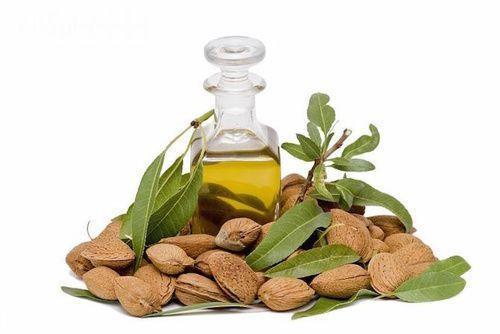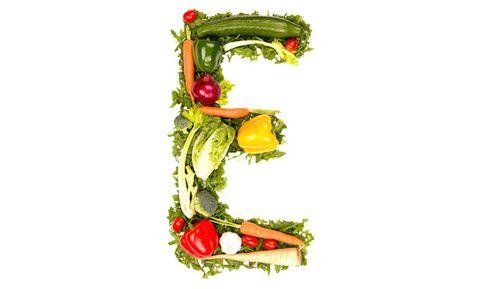- foods rich in vitamin E, like spinach and almonds, help fight the damage caused by aging and to prevent some forms of cancer. Let's find out better.
> Foods rich in vitamin E
> Daily requirement
> A recipe rich in vitamin E.
Almond oil among foods rich in vitamin E

Properties of vitamin E
Vitamin E refers to a group of 8 fat-soluble vitamins, which in turn are divided into two main categories called tocopherol and tocotrienols.
The usefulness of vitamin E is found in the prevention of aging and oxidation of the body operated by free radicals; studies and research have also shown that the constant and correct intake of vitamin E can contribute to the prevention of diseases or heart attacks, cancer, such as stomach cancer for example, and age-related eye damage.
Vitamin E would also alleviate chronic inflammation and senile dementia.
Main foods rich in vitamin E
The most important food sources of vitamin E are: vegetable oils, such as wheat germ oil, almond oil, sunflower oil, olive oil, safflower oil, soya and corn oil; almonds, hazelnuts, sunflower seeds, peanuts, whole grains, eggs they are equally rich in it, as well as spinach, asparagus, chickpeas, watercress, chestnuts, broccoli, tomatoes.
Cooking, freezing and refining processes reduce the vitamin E content in foods, as does exposure to light and air. Pressurized oils contain more vitamin E than refined ones and so also unrefined and wholemeal flours contain greater quantities than processed ones. Foods that contain large amounts of vitamin C can promote the absorption of vitamin E.
Wheat germ oil
A product that, purchased pure, can be used both internally and externally and represents a very valid source of vitamin E, about 133 mg per 100 g of product. With a typical flavor reminiscent of wheat and straw-yellow color, it is a dense oil that today is mainly used in bread-making and in the production of fresh pasta and cereals. Wheat germ oil is used in natural cosmetics for its very high concentration of vitamin E, the antioxidant par excellence, which protects the lipids of cell membranes (LDL or low density lipoproteins), the main targets of free radicals. Used daily, absolutely raw in salads, for example, or consumed a teaspoon a day in purity, it is a fantastic natural food supplement of vitamin E.
Sunflower seeds
Their vitamin E content is truly amazing: around 60 mg per 100 grams of product. Sunflower seeds are, among the oil seeds, those that boast the lowest caloric content, in fact they are composed of about 45% of fats, 20-28% of proteins and about 23% of carbohydrates. In addition to vitamin E, we find vitamins B1, B2, B6, A, D. Excellent source for the body of magnesium, iron, cobalt, manganese, zinc and copper. Among the essential fatty acids they boast a good presence of chlorogenic acid, linoleic acid and folic acid. Also use them instead of pine nuts to make pesto or to make sauces and pates that are more than healthy.
almonds
Almonds are oil seeds rich in vitamins and minerals. They help keep in good heart health, arteries and bones, and also represent a valid natural remedy against anemia. Almonds are a precious reserve of vitamin E (it is present in the ratio of about 25 mg per 100 g of product) and mineral salts, especially magnesium, iron and calcium. Among the oilseeds are those that have the highest fiber content (12%). A good idea is to consume at least three a day.
Lettuce
Contains 0,2mg of vitamin E per 100 grams of product. Lettuce is a vegetable rich in nutrients, in fact it also contains many minerals and vitamin A and carotenes, as well as vitamins K and C. Be careful to combine foods well: sometimes you think it is difficult to digest lettuce, only because it was put together with other heavier dishes; in any case it is also very good cooked and filled with an immersion blender like a soup, with the addition of coconut milk.
eggs
It is known that egg yolk is a product with a high biological value, it contains noble proteins and many minerals, such as iron, calcium, vitamin E, vitamins of group A, B, D, E. 1 mg of vitamin E is contained in about 100grams of egg.
Also find out about the symptoms, causes and treatments of vitamin E deficiency

Daily requirement
Vitamin E can be taken from a minimum of 15 to a maximum of 1000 milligrams per day, in healthy adult subjects.
Generally the daily requirement pfor adults it is 15 mg, which can increase when you want to help the body to strengthen the immune system and prevent cancer, or to fight cardiovascular disease.
For newborns, 4 milligrams a day is enough, which grows to 10 for children and up to 30 for developing adolescents, as well as for pregnant and breastfeeding women.
Recipe rich in vitamin E.
Sunflower seed pesto
Ingredients for about 4 people:
- 30/40 of fresh basil leaves
- ½ cup of sunflower seeds
- ½ cup of grated Parmesan or pecorino
- a couple of cloves of garlic
- 5 tablespoons of extra virgin olive oil
- whole sea salt to taste
- freshly ground pepper
Method: chop the clean and dry basil in a blender, adding the seeds, cheese, garlic, oil, keeping some aside, adding salt and pepper to taste at the end. Once the pasta is cooked, if you like, add a diced potato and a handful of green beans, as in the Ligurian tradition, drain, add the freshly prepared pesto and a drizzle of extra virgin olive oil, also rich in vitamin E, raw.
READ MORE
What are and when to use natural vitamin E supplements
Other articles on vitamin E:
> Wheat germ, muscles and vitamin E
> Cataract, prevent it with foods rich in vitamin E
> The richest vegetable oils in vitamin E.
> Vitamin E, where is it found?
> Do you know all the properties of vitamin E?
> Vitamin E and zinc: what they are for
| Menshealth.de


























